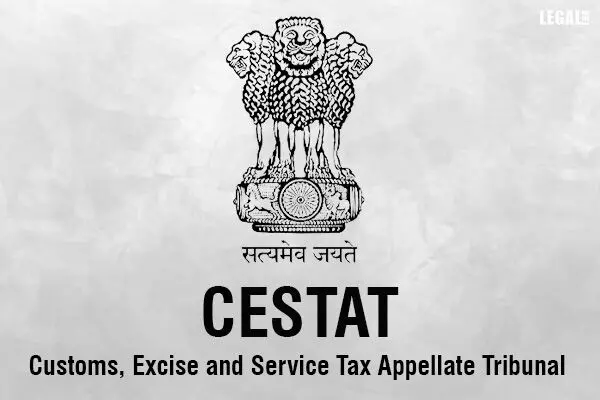- Home
- News
- Articles+
- Aerospace
- AI
- Agriculture
- Alternate Dispute Resolution
- Arbitration & Mediation
- Banking and Finance
- Bankruptcy
- Book Review
- Bribery & Corruption
- Commercial Litigation
- Competition Law
- Conference Reports
- Consumer Products
- Contract
- Corporate Governance
- Corporate Law
- Covid-19
- Cryptocurrency
- Cybersecurity
- Data Protection
- Defence
- Digital Economy
- E-commerce
- Employment Law
- Energy and Natural Resources
- Entertainment and Sports Law
- Environmental Law
- ESG
- FDI
- Food and Beverage
- Gaming
- Health Care
- IBC Diaries
- In Focus
- Inclusion & Diversity
- Insurance Law
- Intellectual Property
- International Law
- IP & Tech Era
- Know the Law
- Labour Laws
- Law & Policy and Regulation
- Litigation
- Litigation Funding
- Manufacturing
- Mergers & Acquisitions
- NFTs
- Privacy
- Private Equity
- Project Finance
- Real Estate
- Risk and Compliance
- Student Corner
- Take On Board
- Tax
- Technology Media and Telecom
- Tributes
- Viewpoint
- Zoom In
- Law Firms
- In-House
- Rankings
- E-Magazine
- Legal Era TV
- Events
- News
- Articles
- Aerospace
- AI
- Agriculture
- Alternate Dispute Resolution
- Arbitration & Mediation
- Banking and Finance
- Bankruptcy
- Book Review
- Bribery & Corruption
- Commercial Litigation
- Competition Law
- Conference Reports
- Consumer Products
- Contract
- Corporate Governance
- Corporate Law
- Covid-19
- Cryptocurrency
- Cybersecurity
- Data Protection
- Defence
- Digital Economy
- E-commerce
- Employment Law
- Energy and Natural Resources
- Entertainment and Sports Law
- Environmental Law
- ESG
- FDI
- Food and Beverage
- Gaming
- Health Care
- IBC Diaries
- In Focus
- Inclusion & Diversity
- Insurance Law
- Intellectual Property
- International Law
- IP & Tech Era
- Know the Law
- Labour Laws
- Law & Policy and Regulation
- Litigation
- Litigation Funding
- Manufacturing
- Mergers & Acquisitions
- NFTs
- Privacy
- Private Equity
- Project Finance
- Real Estate
- Risk and Compliance
- Student Corner
- Take On Board
- Tax
- Technology Media and Telecom
- Tributes
- Viewpoint
- Zoom In
- Law Firms
- In-House
- Rankings
- E-Magazine
- Legal Era TV
- Events
CESTAT: Location of Service Provider and Recipient Irrelevant for Availing Cenvat Credit

CESTAT: Location of Service Provider and Recipient Irrelevant for Availing Cenvat Credit
Highlights that it was a valuable piece of legislation, aimed at conferring benefits and rectifying the cascading effects
The Ahmedabad Bench of the Customs, Excise and Service Tax Appellate Tribunal (CESTAT) has ruled that the location of the service provider and the recipient is irrelevant for availing Central Value Added Tax (CENVAT) credit on input services and paying service tax on output services.
It said that the key factor was the utilization of input services for providing output services, regardless of where the services were provided and received.
The issue was the eligibility of AGS Transact Technologies Ltd. (respondent) to avail and utilize CENVAT credit on input services and capital goods at its unit in Daman, on India’s west coast.
The revenue department argued that the CENVAT credit claimed by the respondent at its factory in Daman (related to the input services and capital goods), lacked a direct or indirect connection with the excisable goods produced at the same unit. It contended that the respondent was not entitled to the disputed CENVAT credit.
The Bench of Ramesh Nair (Judicial Member) and C.L. Mahar (Technical Member) referred to Rule 3 of the CENVAT Credit Rules, 2004. It noted that the credit for excise duty paid on input or capital goods, as well as the service tax paid on input services, was collectively termed as ‘CENVAT credit’.
This credit was open for both manufacturers and service providers. It could be utilized for the payment of either excise duty or service tax. The provisions of the rules did not explicitly mandate the requirement for manufacturers and service providers to maintain separate accounts for availing and utilizing the CENVAT credit.
Therefore, the absence of any such restriction or prohibition implied that the assessee had the freedom to maintain a consolidated CENVAT account and use it for discharging both excise duty and service tax obligations.
The tribunal emphasized that since the respondent operated both as a manufacturer and a provider of output services from Daman during the contested period, it was eligible to avail CENVAT credit on input, capital goods, and input services used for furnishing output services. This entitlement arose from its centralized service tax registration at the factory, which encompassed both manufactured goods and provided output services.
The Bench highlighted that CENVAT was a constructive piece of legislation. It was aimed at conferring benefits and rectifying the cascading effects. Therefore, the rejection of credit based on procedural irregularities was untenable due to the legislative intent behind CENVAT.
Agreeing with the respondent's argument, the tribunal highlighted that Rule 2(l) of the CENVAT Credit Rules did not impose any limitation on the receipt and utilization of input services solely within the premises or the factory of the output service provider.
It stated that the Commissioner had correctly sanctioned the CENVAT credit to the respondent.


